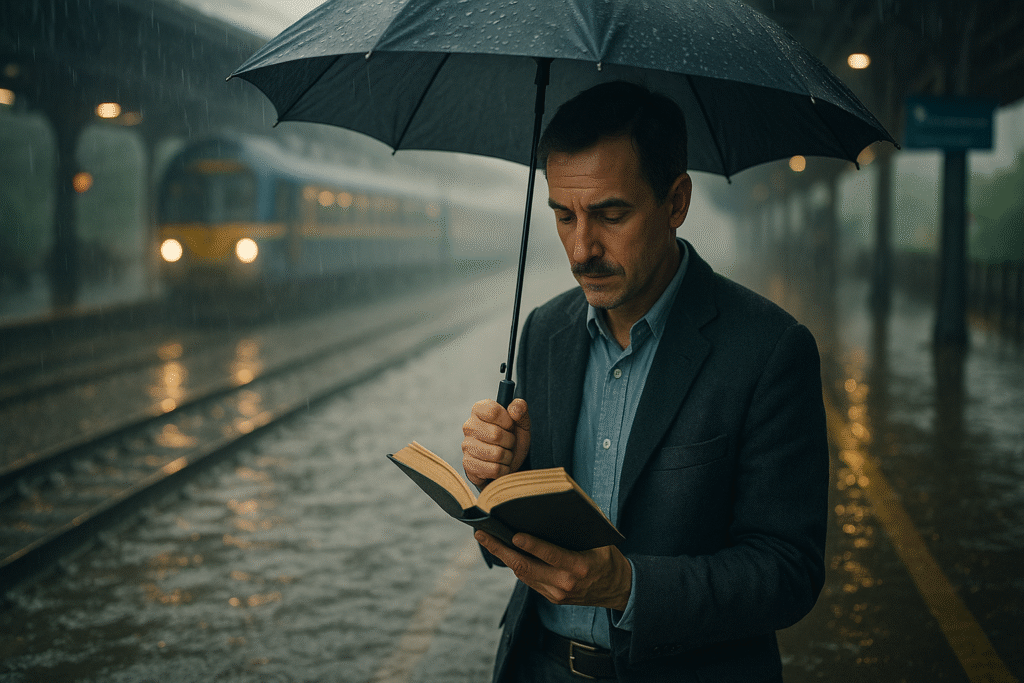Fun Fact: The Indian monsoon is so powerful that it can actually shift the Earth’s gravitational field during its peak!
Every June, we crane our necks toward the sky, looking for a promise in the clouds. The first raindrop isn’t just weather—it’s a relief, a reckoning, and a reminder. “This year again, the sky keeps us guessing,” sighs a farmer scanning the horizon. “It’s early,” says a commuter stuck under a leaking tin roof. But more than anything, the monsoon is uncertain. And perhaps, that’s exactly what makes it such a profound teacher.
In a world obsessed with instant gratification and precise predictions, the monsoon stands its ground. It doesn’t care for your deadlines. It refuses to follow a script. It floods, it retreats, it teases. And through all its unpredictability, it teaches us something we’ve nearly forgotten—how to wait.
The Annual Gamble with the Sky
In India, where nearly 70% of annual rainfall is concentrated within just four months, the monsoon isn’t just a season—it’s a gamble that 1.4 billion people are forced to play every year. Crops depend on it, water reservoirs wait for it, cities prepare for chaos, and villages pray.
You can plan an international summit with satellite precision, but you can’t guarantee when exactly the rains will hit Kerala’s coast. That uncertainty filters down to everything—school schedules, agricultural cycles, even wedding dates. There’s no “Plan B” for a failed monsoon. There’s only waiting, adapting, and hoping.
Nature’s Lesson in Surrender
The monsoon doesn’t ask for control. It demands surrender.
When the skies open up over the Western Ghats or flood the Ganges Basin, all we can do is respond. Farmers switch crops mid-season. Fishermen avoid the sea for weeks. Urban dwellers become temporary water navigators, hopping over puddles and adjusting their morning commute.
This forced flexibility is a strange kind of resilience. It’s a seasonal reminder that all our control is borrowed. Even in an age ruled by artificial intelligence (AI), algorithms, and precision forecasts, the monsoon walks in uninvited and unbothered. It laughs at our models and breaks our predictions. And yet, life goes on.
Why Hurry When It’s Raining?
The rain brings with it a strange, deliberate slowing down—as if time itself is taking a deep breath. Trains are delayed. Clothes take days to dry. Conversations stretch over chai and pakoras. In the West, slowness is a luxury called “mindfulness.” In India, monsoon slowness is a cultural default.
And perhaps that pause, that interruption, is exactly what we’re starved for. Monsoons remind us that not everything is meant to be rushed. Some days, the only thing to do is stand still, let the waters swell, and trust they’ll find their way back down. In an age where notifications demand our attention every minute, the rain asks us to just sit still.

Uncertainty as a Cultural Constant
If you look closely, Indian culture has always been shaped by seasonal uncertainty. Ancient texts talk about rain cycles, droughts, and floods—not as anomalies but as part of life. There are entire folk songs in Maharashtra that praise the clouds one day and curse them the next. For generations, our farmers haven’t relied on graphs or dashboards—they’ve trusted the soil, the wind, and stories passed down by sunburnt hands.
Our celebrations—be it Onam in Kerala, Teej in Rajasthan, or Bihu in Assam—are stitched into the rhythm of the rains themselves. We don’t just endure uncertainty. We celebrate it.
Compare that to a hyper-efficient corporate world obsessed with timelines, KPIs (Key Performance Indicators), and deliverables. There’s very little room for the unexpected. But here’s the irony: the monsoon always arrives. It may delay. It may detour. But it comes. Just not on your terms.
The Psychological Cost of Predictability
Let’s be honest—our hunger for certainty is often rooted in fear. We want to control outcomes, manage risk, and avoid disappointment. But what if uncertainty isn’t something to be feared, but something to be learned from?
Studies in psychology suggest that accepting uncertainty is closely linked to emotional resilience. People who learn to embrace unpredictability are less anxious, more adaptive, and surprisingly, happier. And who’s had more training in uncertainty than the Indian monsoon dweller?
When children are sent to school in plastic raincoats knowing they may be sent home in boats, that’s not chaos—it’s training. When shops open knowing they may have to shut down by noon, that’s not inefficiency—it’s improvisation. Monsoons are not just meteorological events. They’re annual mindfulness bootcamps.
Monsoon as Metaphor
What if we thought of life as a monsoon?
Not a perfectly clear, calendar-planned experience, but a messy, wet, unpredictable season that floods your basement and your heart at the same time. Sometimes, the best things come after waiting. Sometimes, the detours drench you in clarity. And sometimes, you just have to dance in the downpour.
We spend so much of our lives building umbrellas against the unknown—insurance policies, backup plans, ten-step routines. But the monsoon says: get wet. Sit with discomfort. Listen to the thunder and feel it in your bones. Because when the rain finally comes, it doesn’t just water your fields. It cleanses your spirit.
What We Can Learn (If We’re Willing)
- Embrace the Unknown: Not everything has to be predicted. Sometimes it’s okay to not know.
- Slow Down: Let the rains be a reason to pause—not an interruption.
- Stay Flexible: Like the farmer who switches crops or the vendor who sells umbrellas, adapt when plans wash away.
- Celebrate Waiting: Not all waiting is wasted. Sometimes, the soil needs time to soak.
- Resist the Urge to Control: Instead of asking, “Why is this happening to me?” ask, “What is this teaching me?”
Conclusion: Let the Rain Change You
In many ways, we’re living in unpredictable times—climate change, political shifts, economic disruptions. The monsoon is no longer reliable in the ways it once was, but neither is life. And that’s the point.
We need to stop treating uncertainty as a glitch in the matrix. It’s the system itself. It’s where creativity happens. Where courage lives. Where new stories begin.
So the next time the clouds gather and the winds rise, don’t just worry about your drying clothes or traffic jams. Take a moment. Look up. And let the rain teach you how to live.
Author’s Note
I wrote this while watching raindrops chase each other down my windowpane. Monsoons have always been more than weather to me—they’ve been stories, silences, and sometimes sermons. If you’ve ever waited for the rain with your breath held, you already know what I mean.
G.C., Ecosociosphere contributor.





Comments
Loving the info on this web site, you have done great job on the articles.